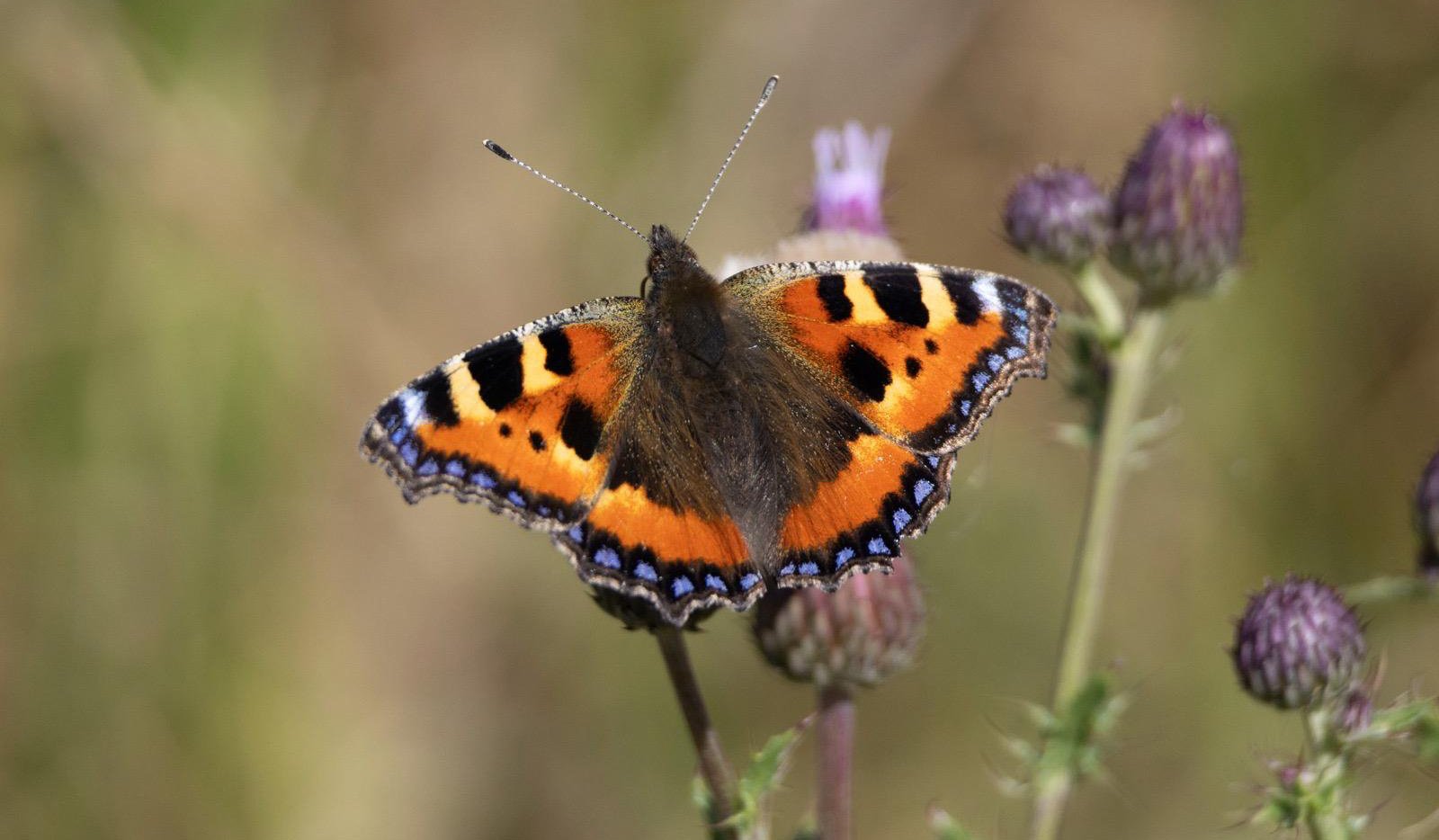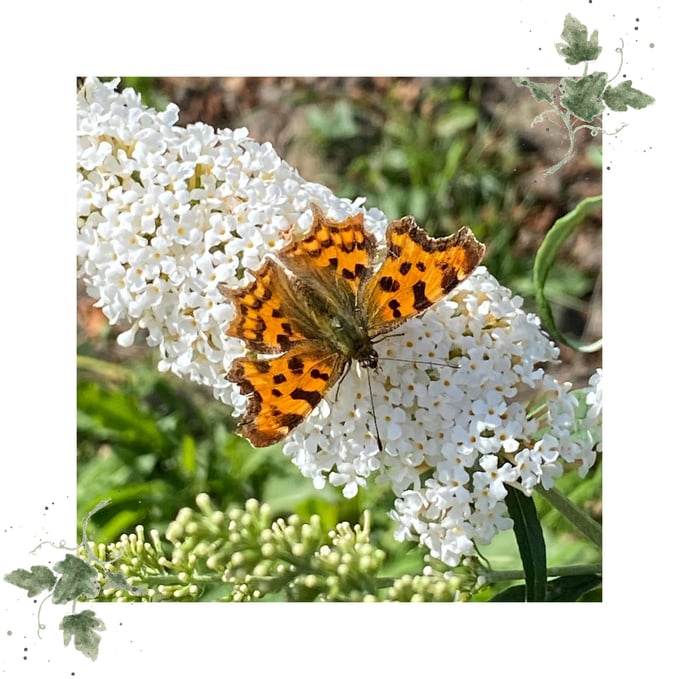- Home
- Written by Wrendale
- Caring for moths and butterflies this autumn: A simple guide
Caring for moths and butterflies this autumn: A simple guide

Did you take part in the big butterfly count this year? Butterfly Conservation has recently released the results and declared a butterfly emergency - numbers were the lowest ever recorded - 22% below the lowest previously recorded in 2022. Although this was likely due to the very cold and wet conditions, it is part of a downward trend and illustrates how vulnerable butterflies are to extreme weather driven by the climate crisis.
The charity is now calling for a complete ban on harmful neonicotinoid insecticides, but there's a lot we can do in our own gardens to make a difference. By avoiding pesticides and creating wild spaces filled with native plants, we can provide vital food and shelter for caterpillars and butterflies alike. Stinging nettles, garlic mustard, ivy, and other native species are crucial to the survival of these pollinators, and a few simple changes to our outdoor spaces can have a big impact. With butterfly numbers reaching an all time low this year, it’s more important than ever to take action in our gardens - here are some easy ways you can care for moths and butterflies this autumn...
LEAVE A PATCH OF STINGING NETTLES
 Privet Hawk-moth photographed on the Wrendale farm
Privet Hawk-moth photographed on the Wrendale farm
Although stinging nettles may not be the most popular garden plant, they are incredibly valuable for butterflies. Species like the Red Admiral rely on nettles to lay their eggs, and the caterpillars that hatch feed on the leaves, ensuring the survival of future generations. By leaving a patch of nettles in a sunny spot this autumn, you’ll provide a safe habitat for these caterpillars to thrive.
PLANT BULBS NOW FOR SPRING BUTTERFLIES
 Planning ahead for spring is a great way to support early butterflies. Planting nectar rich bulbs like crocuses, snowdrops, and bluebells now will provide a crucial food source for butterflies as they emerge after winter. These early flowering plants will bloom just as butterflies are seeking nourishment, giving them the energy they need to kickstart their breeding season.
Planning ahead for spring is a great way to support early butterflies. Planting nectar rich bulbs like crocuses, snowdrops, and bluebells now will provide a crucial food source for butterflies as they emerge after winter. These early flowering plants will bloom just as butterflies are seeking nourishment, giving them the energy they need to kickstart their breeding season.
PLANT TREES FOR SHELTER AND FOOD
 Speckled Wood Butterfly photographed on the Wrendale farm
Speckled Wood Butterfly photographed on the Wrendale farm
Planting native trees such as willows, oaks, and birches will provide food and shelter for a variety of butterfly and moth species. These trees offer protective overwintering sites and a rich supply of nectar and leaves for caterpillars. Planting trees in autumn gives them time to establish before spring, creating a safe space for these important pollinators to breed and feed.
FEED THEM FRUIT

As nectar sources diminish during autumn, offering overripe fruit, such as apples or pears, can provide butterflies with a much needed source of sugar. Species like the Red Admiral, Painted Lady, and Small Tortoiseshell will flock to these natural offerings, using the energy to prepare for migration or hibernation. Feeding them fruit is an easy and effective way to support them through the harsher autumn weather.
WHY IS IVY IMPORTANT?
Ivy is often overlooked, but it's a powerhouse for wildlife. In autumn, its flowers provide one of the last nectar sources for moths and butterflies, such as the Comma butterfly pictured above. As the temperature drops, ivy’s dense, evergreen leaves offer a warm and protective shelter for many species to hibernate, including moths. Consider letting ivy grow naturally in a section of your garden to provide year round benefits.
GIFTS FOR WILDLIFE LOVERS
Click here to explore gifts that are perfect for the wildlife lover in your life.
Subscribe to our Newsletter
Archive
- July 2025 (1)
- May 2025 (2)
- April 2025 (2)
- March 2025 (5)
- February 2025 (1)
- January 2025 (3)
- December 2024 (2)
- November 2024 (1)
- October 2024 (1)
- September 2024 (3)
- August 2024 (1)
- July 2024 (2)
- June 2024 (2)
- May 2024 (5)
- April 2024 (3)
- March 2024 (3)
- February 2024 (5)
- January 2024 (3)
- December 2023 (6)
- November 2023 (4)
- October 2023 (3)
- September 2023 (4)
- August 2023 (5)
- July 2023 (4)
- June 2023 (4)
- May 2023 (2)
- April 2023 (6)
- March 2023 (5)
- February 2023 (3)
- January 2023 (5)
- December 2022 (4)
- November 2022 (3)
- October 2022 (3)
- September 2022 (4)
- August 2022 (5)
- July 2022 (2)
- April 2021 (3)
